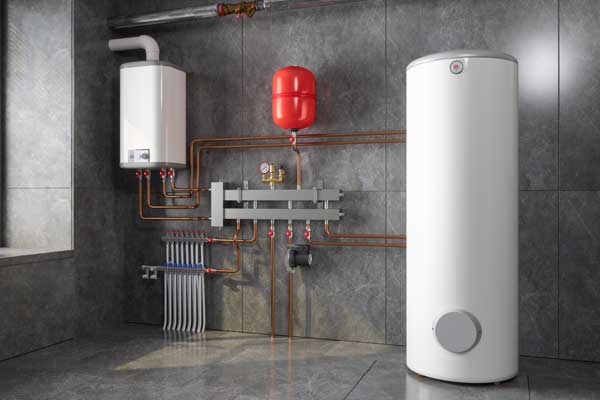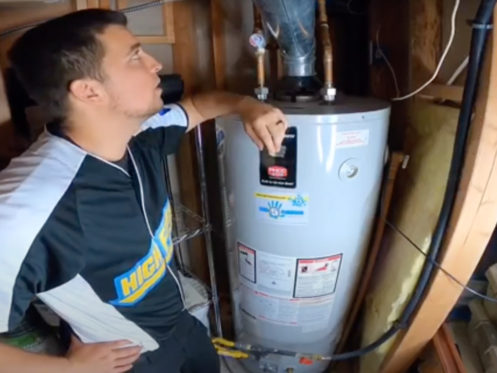This article directly below about How to Maintain a Hot Water Heater in a Few Simple Steps is definitely entertaining. Don't bypass it.

Hot water is important for everyday convenience, whether it's for a refreshing shower or cleaning recipes. To ensure your hot water system runs effectively and lasts much longer, regular maintenance is crucial. This post gives sensible suggestions and understandings on how to preserve your home's hot water system to avoid interruptions and pricey repair work.
Introduction
Keeping your home's hot water system may seem complicated, but with a few straightforward actions, you can ensure it runs efficiently for many years ahead. This guide covers everything from comprehending your hot water system to DIY upkeep tips and knowing when to hire professional help.
Relevance of Maintaining Your Hot Water System
Routine maintenance not only prolongs the life expectancy of your warm water system yet additionally guarantees it runs successfully. Disregarding upkeep can bring about lowered performance, greater power costs, and also early failing of the system.
Indications Your Hot Water System Needs Maintenance
Understanding when your warm water system requires focus can protect against major issues. Watch out for signs such as inconsistent water temperature level, weird sounds from the heating system, or rustic water.
Comprehending Your Hot Water System
Before diving into upkeep jobs, it's practical to comprehend the basic components of your warm water system. Commonly, this includes the water heater itself, pipes, anode poles, and temperature level controls.
Month-to-month Maintenance Tasks
Regular monthly checks can aid capture minor issues prior to they escalate.
Purging the Water Heater
Flushing your hot water heater removes debris accumulation, boosting efficiency and lengthening its life.
Monitoring and Replacing Anode Rods
Anode rods protect against rust inside the tank. Inspecting and replacing them when worn out is crucial.
Evaluating and Changing Temperature Setups
Changing the temperature setups makes sure optimal efficiency and security.
DIY Tips for Upkeep
You can do several upkeep tasks on your own to maintain your hot water system in leading condition.
Looking for Leakages
Routinely check pipes and links for leaks, as these can bring about water damages and higher expenses.
Evaluating Stress Alleviation Valves
Evaluating the pressure safety valve ensures it works correctly and protects against extreme stress accumulation.
Shielding Pipelines
Insulating warm water pipes decreases warmth loss and can save energy.
When to Call an Expert
While do it yourself maintenance is useful, some problems call for professional knowledge.
Complicated Concerns Requiring Expert Aid
Instances include major leakages, electric issues, or if your hot water heater is regularly underperforming.
Regular Professional Maintenance Conveniences
Professional upkeep can consist of comprehensive examinations, tune-ups, and ensuring compliance with safety and security standards.
Final thought
Normal maintenance of your home's hot water system is crucial for efficiency, durability, and price savings. By following these ideas and recognizing when to seek expert aid, you can make certain a dependable supply of hot water without unforeseen disturbances.
How to Maintain an Instant Hot Water Heater
Before tinkering with your hot water heater, make sure that it’s not powered on. You also have to turn off the main circuit breaker and shut off the main gas line to prevent accidents. Also turn off the water valves connected to your unit to prevent water from flowing into and out of the appliance. 2. When you’re done, you have to detach the purge valves’ caps. These look like the letter “T†and are situated on either side of the water valves. Doing so will release any pressure that has accumulated inside the valves while at the same time avoid hot water from shooting out and burning your skin. 3. When the purge valves’ caps are removed, you have to connect your hosing lines to the valves. Your unit should have come with three hoses but if it didn’t, you can purchase these things from any hardware or home repair shops. You can also get them from retail stores that sell water heating systems. Read the user’s manual and follow it to complete this task properly. When the hosing lines are connected, open the purge port’s valves. 4. You should never use harsh chemical cleaners or solutions when cleaning your unit. Make use of white vinegar instead. It should be undiluted and you’ll probably use about 2 gallons. 5. Now flush your water heater. This task should probably take about 40 minutes. We can’t give you specific directions for this because the procedure is carried out depending on the type, model and brand of your heater. With that being said, refer to the user’s manual. 6. When you’re done draining the unit, you have to turn off the purge port valves again. Remove the hosing lines that you earlier installed on each of the water valves. Put the valve caps (purge port) back in their respective places and be very careful so as not to damage the rubber discs that are found inside these caps. 7. Now that everything’s back in place, check your user’s manual again to find out how to reactivate your water heating system. 8. Once it is working, turn one of your hot water faucets on just to let air pass through the heater’s water supply pipes. Leave the tap on until water flows smoothly out of it. https://www.orrplumbing.com/blog/2014/september/how-to-maintain-an-instant-hot-water-heater/

As a keen person who reads about Water Heater Maintenance Tips You Can't Afford to Forget, I was thinking sharing that chunk was essential. Sharing is good. One never knows, you might be helping someone out. Thank you so much for taking the time to read it.
Request An Estimate